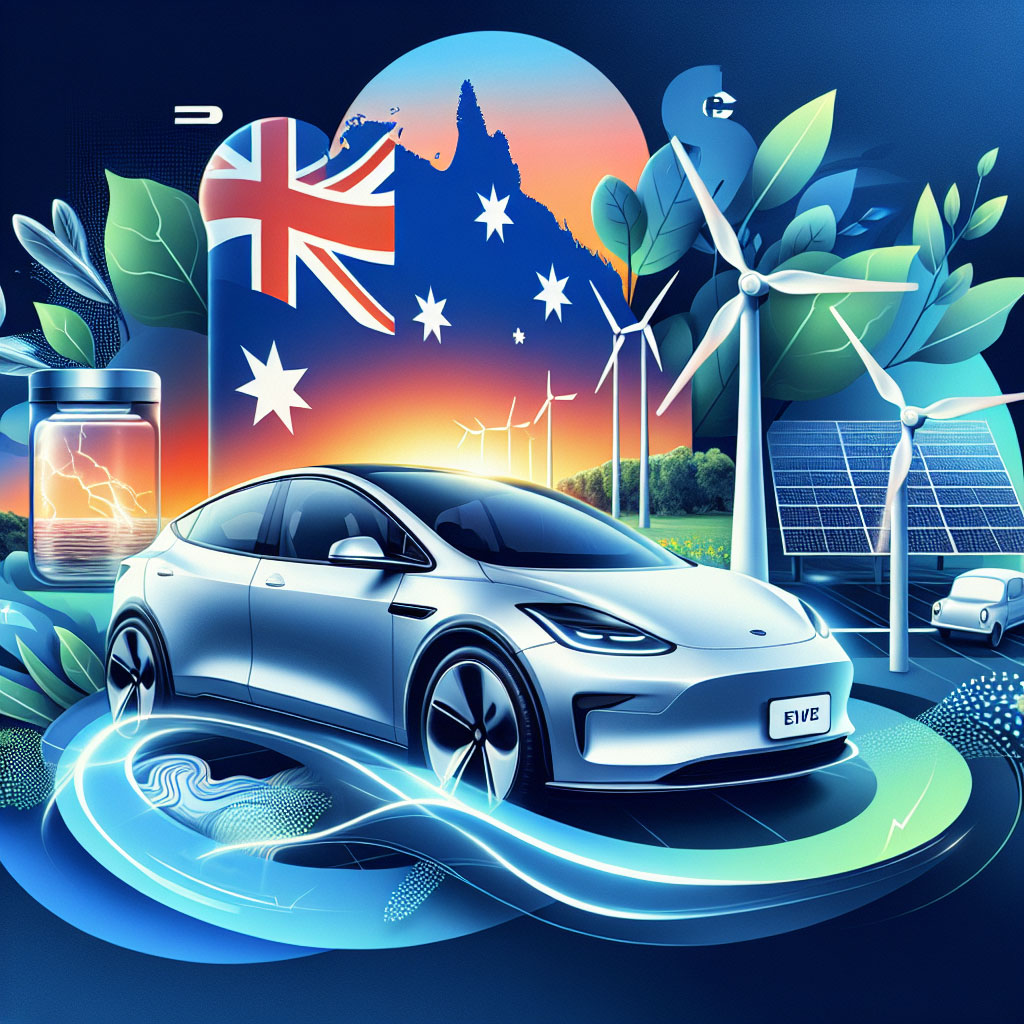
If you have noticed more silent, clean-looking cars on our roads, you aren’t imagining it. Electric vehicle (EV) uptake in Australia has accelerated: battery-electric and plug-in hybrid models together accounted for roughly 9.5% of new car sales in 2024, a near-150% increase compared with 2022. That momentum looks set to continue as model choice widens, prices ease in line with global battery cost reductions, and charging networks expand.
But Australia still trails many overseas markets. The UK approached 20% EV share last year and Norway remains the global outlier with almost nine in 10 new cars now electric. So the question for many Australian drivers is straightforward: is 2025 the right time to switch?
The practical barriers: cost and charging
Two issues consistently shape Australian consumers’ hesitancy: upfront cost and charging infrastructure.
Upfront cost
Price remains the principal barrier. New cars in Australia-EVs included-tend to carry higher retail prices than comparable models in larger markets. Contributing factors include freight and distribution costs for a geographically remote market, lower sales volumes, exchange rate swings and the local cost of doing business. That said, global battery-pack price declines and the arrival of competitively priced models from established and new manufacturers are compressing premiums. Some models are now cheaper in Australia than in comparable overseas markets, and a growing used-EV market is providing more affordable entry points.
Charging infrastructure
Australia’s charging network has grown quickly from a low base. State and private operators have invested in fast-charging corridors and urban deployments, and major providers-both domestic and international-are rolling out DC fast chargers and expanding networks in regional areas. Tesla’s Supercharger network is still one of the most extensive proprietary systems, while Australian companies and consortiums are installing public chargers to support longer trips.
That said, coverage remains uneven. Cities and major highways are increasingly well served, but many regional and remote routes still have limited fast-charging options. For many buyers, reliable home charging is the single biggest enabler of EV ownership; if you can install a home EV charger, your day-to-day experience will be dramatically simpler.
How Australia compares internationally
Australia is catching up, but context matters. Per-capita charging density and EV market share lag Europe and some North American regions. Our population distribution-a few dense urban centres and vast sparsely populated areas-makes the economics of charging infrastructure different to European markets. However, the rate of charger installation has accelerated and is outpacing the growth in EV numbers in several states, which should help ease public charging access over the next few years.
Why EV prices in Australia have been high-and why that’s changing
Multiple factors push vehicle prices higher here: import logistics, insurance and compliance costs, and the lack of the same scale of sales enjoyed by larger markets. Low historical demand for EVs compounded these effects. But the landscape is shifting:
- More competitive global supply: Chinese manufacturers and established global brands are releasing smaller, better‑priced models designed for broad markets.
- Falling battery costs: battery pack prices have been declining, an effect that tends to trickle into consumer prices with time.
- Model variety: newcomers and increased local availability mean more choices across price points-from compact hatchbacks to family SUVs.
For many buyers, the total cost of ownership (TCO) now favours EVs, particularly for urban commuters and those who can charge at home. Lower running costs-reduced fuel bills, simpler servicing regimes and attractive warranties on battery packs-can offset higher purchase prices across the ownership cycle.
Service networks and the new entrants
A caution for buyers of newer or smaller brands: aftersales service, parts availability and local dealer expertise vary. Some international brands enter Australia through partnerships with existing dealer networks rather than building their own footprints. That can work well, but it’s sensible to check local service arrangements, warranty terms and the experience of other owners before committing to a purchase.
Environmental and ethical considerations
For many buyers the environmental case is central. Even with a grid that still relies significantly on fossil fuels in places, powering a car from the electricity network is generally more efficient and lower-emitting than burning petrol. The net benefits increase as the grid incorporates more renewable energy.
At the same time, mining and processing of battery metals-nickel, cobalt, lithium-have raised ethical and human-rights questions in several supply chains. Transparent sourcing, expanded recycling and greater corporate accountability are improving the picture, but these remain legitimate concerns for buyers who want to match purchase choices to personal values.
Technological trends shaping the market
Several technical developments make today’s EVs more practical and more attractive:
- Faster charging: advances in charger and vehicle architecture (including higher-voltage systems) reduce charging times for many models.
- Increased range: efficient motors and larger-capacity batteries now mean most new EVs meet the daily needs of typical drivers and many weekend itineraries.
- Battery warranties and second-life solutions: manufacturers often provide extended warranties on battery packs, while battery-reuse and recycling schemes are maturing.
- Smart charging and V2G: vehicle-to-grid and vehicle-to-home trials in Australia are expanding, allowing owners to sell power back to the network or support household energy use during peak periods-potential future sources of value.
Is 2025 the right time to buy?
Short answer: for many Australians, yes-with qualifications.
Consider buying an EV now if:
- You can install and regularly use a home charger.
- Your typical daily driving is within the range of mainstream EV models (many deliver 300-500 km on a charge).
- You value lower running costs, quieter operation and strong performance characteristics.
- You primarily drive in urban or suburban environments, or use well-travelled highways served by fast chargers.
- You’re comfortable evaluating warranties, dealer support and software update regimes.
You might want to wait or choose carefully if:
- You frequently travel remote routes with limited charging options.
- You require a vehicle for heavy towing over long distances (towing reduces EV range and infrastructure is often sparser on long-haul routes).
- You’re concerned about aftersales support for a new-brand import where local service networks are untested.
A simple buyer checklist
- Check home-charging feasibility (off-street parking, electrical upgrade needs).
- Calculate TCO including expected fuel/electricity costs, servicing and potential incentives.
- Assess model suitability for range, charging speed and payload/towing needs.
- Research local dealer support, warranty coverage and battery warranty length.
- Consider resale demand and availability of used-EV pricing data.
- Look into charging networks and planned deployments on routes you drive regularly.
Conclusion
Australia’s EV market has moved from the fringes to the mainstream in a matter of a few years. By 2025, greater model choice, falling battery costs and expanding charging networks make EVs an attractive option for many drivers-especially those with access to reliable home charging and routine urban or regional driving patterns. There remain legitimate considerations around regional charging coverage, brand support and ethical sourcing of battery materials, but these are being addressed incrementally by industry, government and community action. For buyers who prioritise lower running costs, a cleaner driving experience and the latest vehicle technologies, now is a sensible time to consider an EV. For others-particularly frequent long-distance drivers in remote areas-careful research and ensuring a suitable charging plan remain essential.
Frequently asked questions (FAQs)
Q: Will I get stranded if I switch to an EV?
A: Unlikely if you plan carefully. For everyday commutes and urban driving, charging at home and using destination chargers covers most needs. For longer trips, map charging stops in advance and use fast-charging corridors where available. If you regularly travel remote routes, check charger locations meticulously before a trip.
Q: How long do EV batteries last?
A: Most modern EV batteries come with manufacturer warranties typically covering eight years or a set kilometre limit for significant capacity loss. Real-world degradation varies with climate, charging habits and usage, but many batteries retain most of their usable capacity for years.
Q: Is charging at home expensive or complicated?
A: Home charging is generally the simplest and most economical option. An overnight charge on a standard home tariff often costs much less than filling a petrol car for the same distance. Installing a dedicated home charger may require an electrician and, in some cases, an upgrade to your home electrical infrastructure.
Q: Are there incentives available?
A: Incentives vary by jurisdiction and change over time. Some states and territories offer rebates, stamp duty concessions or registration incentives; federal programs and grid-support incentives may also apply. Check your state government website and speak to dealers for current offers.
Q: What about towing with an EV?
A: Towing reduces EV range substantially and increases energy use. Some EVs are rated for towing and perform well with appropriate equipment; others are less suited. If you tow frequently, scrutinise manufacturer towing ratings, expect reduced range and plan for slower, more energy-intensive trips.
Q: Are used EVs a good buy?
A: The used EV market offers strong value opportunities as earlier adopters upgrade. When buying used, check battery health, charging history, remaining warranty and vehicle service records. Certified pre-owned EV programs from manufacturers can provide additional peace of mind.
Q: How do I choose the right EV model?
A: Match vehicle range to your driving patterns, prioritise home charging convenience, research aftersales support and warranty terms, and assess real-world reviews for comfort, cargo space and charging speed. Total cost of ownership calculators can help compare EVs with petrol alternatives.
About EV Evolution
EV Evolution is the leading online platform dedicated to Australian electric vehicle owners and enthusiasts. We foster a vibrant community, delivering essential EV news and insights, and enhancing user engagement through our innovative, AI-powered chatbot for dynamic discussions. Our mission is to empower Australian electric vehicle owners and enthusiasts by fostering a vibrant, AI-driven online community that connects, informs, and advances the nation’s electric vehicle landscape.




